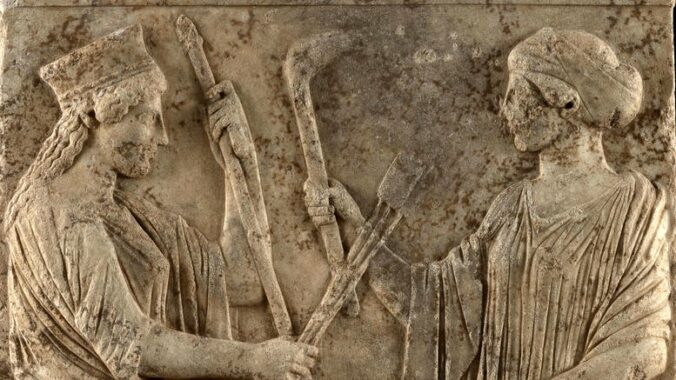VoegelinView, the website for the Eric Voegelin Society, is running a 4-part special series on the correspondences of Marshall McLuhan and the German-American political philosopher. The series is written by Cameron McEwen of the McLuhan’s New Sciences blog.
Voegelin’s The New Science of Politics (1952) posits a continuity of form between the ancient Gnostic beliefs and contemporary political movements. A year after the release of The Mechanical Bride (1951), McLuhan had, shall we say, a “breakthrough” into the nature of the poetic techniques he had been studying from Romantic poetry, through Symbolism, into the Modern styles as a process of psychology. A useful adumbration of his scholarly “perspective” on this development can be found in Through The Vanishing Point (1968), by McLuhan and Harley Parker:
Concern with the processes in the arts led some nineteenth-century aestheticians to consider that while the genius had a mind that used associations, his chain of associations worked backwards. Their concern was enriched by the work of Samuel Taylor Coleridge. The studies of Coleridge inspired Edgar Allan Poe. The effect of Poe on Baudelaire and Valéry is well known.
The idea of a work of art as a direct manifestation of the creative process itself exerted wide influence among the Symbolists. It remained only to devise means to include the audience in this creative process in order to reach that stage of aesthetics that is familiar in Expressionism and in the speculations of the twentieth century. (pg. 23)
In the first letter McLuhan writes to Voegelin, he discloses the suddenness of his realization that these developments of artistic technique are identical with cult practices of ritual initiation. The collapse of two formerly discrete fields—art on the one hand, and secret societies on the other—into one singular phenomenon radically reoriented McLuhan’s approach to the artists he had been studying and admiring. He told them as much, as can be read in his letters of the time to Ezra Pound and Wyndham Lewis.
More context and background on this strange relation can be found in Leon Surette’s excellent 1993 book The Birth of Modernism: Ezra Pound, T.S. Eliot, W.B. Yeats and the Occult—a book McLuhan would certainly have found to be of enormous help had it been available in the time of these correspondences with Voegelin. As it were, McLuhan and Voegelin both recognised forms of ancient religion present in the contemporary world—McLuhan in the arts, and Voegelin in political ideology—providing the deep affinity in this record of the two men communing as “ships passing in the night.”
The nature of McLuhan’s opinions regarding secret societies and, in particular, his suspicions of Northrop Frye are explored at length in B.W. Powe’s 2014 book Marshall McLuhan & Northrop Frye: Apocalypse and Alchemy.
The first part of the VoegelinView series contains the four letters between McLuhan and Voegelin. My recent talk on McLuhan and Media Shamanhood goes into depth on the result of McLuhan’s “put on” of the guru role in the 1960s in light of these explorations of the occult.

Leave a Reply